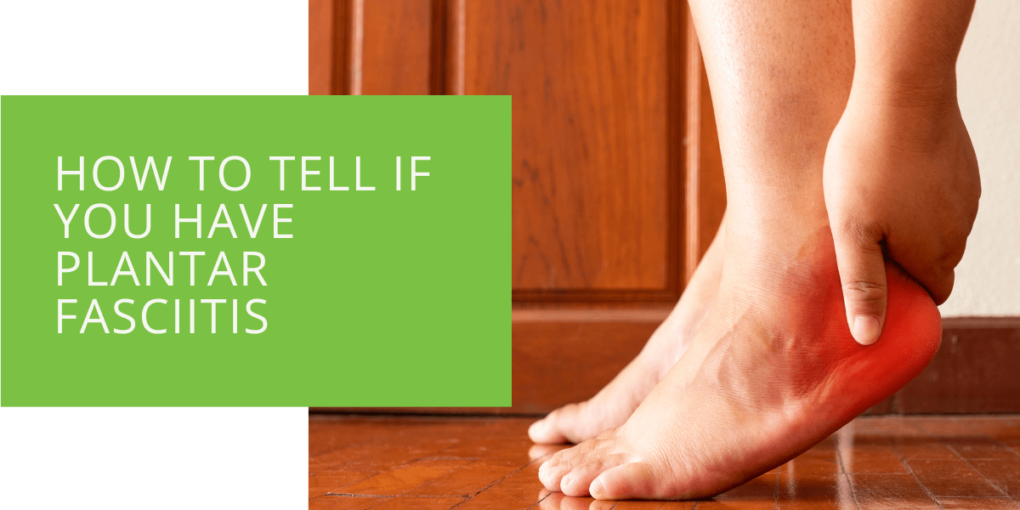How to Tell if You Have Plantar Fasciitis
Plantar fasciitis is a common foot condition that affects the plantar fascia, a thick band of tissue that runs along the bottom of the foot, connecting the heel bone to the toes. It is a painful and sometimes debilitating condition that can significantly impact daily activities. In this article, we will discuss the signs and symptoms of plantar fasciitis and how podiatrists diagnose and treat it.
What is Plantar Fasciitis?
Plantar fasciitis is caused by inflammation of the plantar fascia. It is a common condition that affects people of all ages and activity levels. Still, it is most commonly seen in runners, dancers, and people who spend long periods standing or walking. The condition can be caused by various factors, such as wearing improper footwear, having flat feet, being overweight, and having tight calf muscles.
Common Symptoms of Plantar Fasciitis
The symptoms of plantar fasciitis can vary in severity and impact daily activities, making it essential to recognize them early. Here are some of the most common symptoms of plantar fasciitis:
- Pain and tenderness in the heel or arch of the foot: This pain may start as a mild discomfort and gradually worsen over time. It can be sharp, stabbing, or throbbing and may be more severe when standing or walking for extended periods.
- Morning heel pain: People with plantar fasciitis may experience stabbing pain in the heel when they take their first steps in the morning or after long rest periods. This is because the plantar fascia tightens during inactivity, increasing stress on the heel bone.
- Pain that worsens with activity: Plantar fasciitis can cause pain that worsens with activity or standing for prolonged periods. It can be especially severe after high-impact activities like running or jumping.
- Swelling or inflammation: The affected area may appear swollen or inflamed, and the skin may be red or warm.
- Radiating pain: In some cases, the pain from plantar fasciitis may radiate to the Achilles tendon or other areas of the foot, leading to discomfort or pain in other parts of the foot.
By recognizing these symptoms early, individuals can seek prompt treatment and take steps to manage the condition. It is important to contact a podiatrist if you experience any of these symptoms, as they can diagnose the condition and provide personalized treatment recommendations.

How is Plantar Fasciitis Diagnosed?
A podiatrist can diagnose plantar fasciitis through a physical examination and imaging tests. During the physical examination, the podiatrist will check for areas of tenderness or swelling in the affected foot. They may also ask you to perform certain movements to help them identify the source of the pain.
Imaging tests such as X-rays, ultrasounds, or MRI scans may be ordered to confirm the diagnosis or rule out other conditions with similar symptoms. Once a diagnosis is confirmed, the podiatrist can create a personalized treatment plan.
Home Remedies for Plantar Fasciitis
Home remedies can be an effective way to manage the symptoms of plantar fasciitis. Some of the most common home remedies include:
- Rest and avoiding high-impact activities: Resting the foot and avoiding high-impact activities can help reduce the strain on the plantar fascia, giving it time to heal.
- Stretching and strengthening exercises: Stretching and strengthening exercises can help reduce tightness in the calf muscles and increase flexibility in the foot.
- Ice and heat therapy: Applying ice to the affected area can help reduce pain and inflammation, while heat can help improve blood flow and promote healing.
- Wearing proper footwear and orthotics: Wearing supportive shoes with proper arch support and cushioning can help reduce pressure on the plantar fascia. Orthotics, or custom-made shoe inserts, can also provide additional support and help correct foot alignment.

Medical Treatment for Plantar Fasciitis
If home remedies do not provide relief, medical treatment may be necessary. Some of the most common medical treatments for plantar fasciitis include:
- Non-steroidal anti-inflammatory drugs (NSAIDs): NSAIDs such as ibuprofen or naproxen can help reduce pain and inflammation.
- Corticosteroid injections: Corticosteroid injections can help reduce inflammation and provide pain relief.
- Physical therapy: Physical therapy can help reduce pain, improve flexibility and strength in the affected foot, and prevent future occurrences of plantar fasciitis.
- Extracorporeal Shockwave Therapy (ESWT): ESWT is a non-invasive procedure that uses shockwaves to stimulate healing in the affected foot.
- Surgery: Surgery is typically a last resort for severe cases of plantar fasciitis. It involves cutting the plantar fascia to relieve tension and pain.
How to Prevent Plantar Fasciitis
Preventing plantar fasciitis involves maintaining a healthy weight and lifestyle, wearing proper footwear and orthotics, stretching and strengthening exercises, avoiding high-impact activities, or gradually increasing their intensity. By following these preventative measures, individuals can reduce the risk of developing plantar fasciitis and prevent future occurrences.
Conclusion
Plantar fasciitis is a common condition that can cause significant pain and discomfort in the heel or arch of the foot. By recognizing the early warning signs and symptoms, individuals can seek timely treatment from a podiatrist and take steps to manage the condition. Whether through home remedies or medical treatment, there are many effective ways to relieve pain and inflammation caused by plantar fasciitis. Additionally, by following preventative measures, individuals can reduce their risk of developing the condition and promote long-term foot health. If you are experiencing foot pain or suspect you may have plantar fasciitis, contact a podiatrist for further evaluation and treatment.

